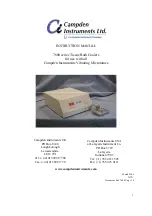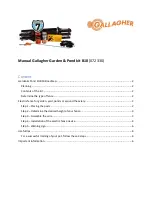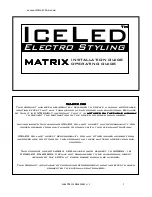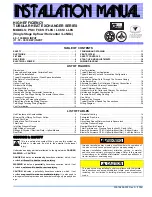
7
6. Make sure that the water pump is pumping water from the reservoir and through the Control
and Stretch Unit.
7. Turn off Main Power and Water Pump Switches.
Start Cell Stretching
1.
The Power Switch must be OFF to freely rotate the Chamber Length Adjustment Knob.
Silicone chambers containing cultured cells are attached to the Stretch Unit by inserting the 4
pins into the corners of the chamber. Rotate the Adjustment Knob clockwise until the bottom of
the chamber is taut.
2. Select the stretch parameters by changing the Stretch Pattern Buttons. Refer to Section 3 for
stretch parameters.
3.
Do not change the Strain Ratio or Strain Frequency Selector Buttons during the
operation of a stretch cycle. Press the Stop Button and wait for the last cycle to
complete and the chamber returns to its starting position before changing stretch
parameters.
Changing parameters during a stretch cycle may damage the motors.
4. Push the Start Button to start the stretch unit.
5. After 5 minutes, stop the stretching and check the condition of the cells. If the cells have not
detached, proceed with your experiment. If the cells are detached, the adhesion matrix coating
was probably insufficient. Recoat the chambers.
Culturing Cells in the Silicone Chambers
1. Seed cells at the appropriate concentrations in the freshly coated chambers.
Important:
It is critical to not over expose the cells to dissociation enzymes. Cells should be
treated in the same manner (type, concentration of enzyme, temperature, and exposure time)
for all experiments.
Important:
Cells should not be cultured at a high cell density in the chambers. For example,
epithelial cells often form a cell-sheet and the cell-cell adhesion seems to be stronger than a
cell-surface adhesion. When this happens cells may detach from the chamber. Additionally,
cultures that are grown over a week in the chambers may detach.
2.
After overnight incubation, inspect cells under a microscope to ensure that they adhered to
the chamber.




































